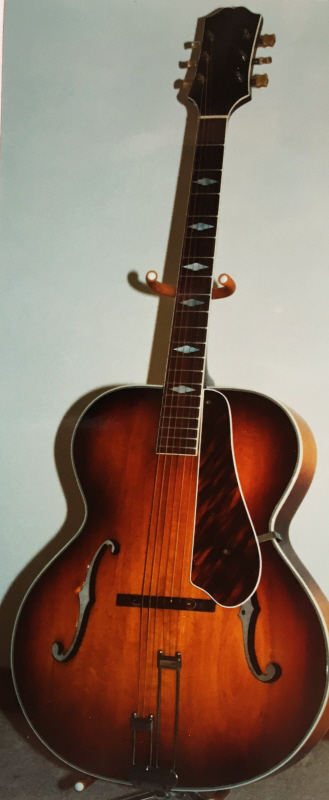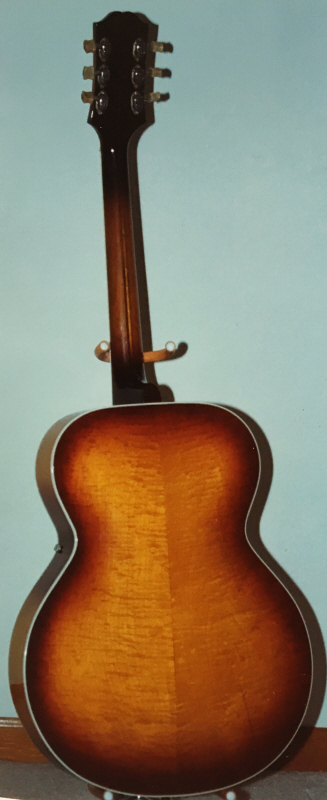

FACTOIDS AND TRIVIA
Like Gibson, Epiphone made its finest archtops from 1930 to 1941 and had its mainstay guitars; namely, the Emperor and DeLuxe models. The Triumph was fourth in the Epiphone line behind the Emperor, DeLuxe, and Broadway, and competed directly with Gibson's L-7 in price, but not in appointments. The Triumph had fancier bindings and tuning machines. Note, too, that the Triumph used cello-style F-holes whereas the L-7 used the traditional guitar F-hole developed by Gibson. Epiphones were made in New York City until 1952 when production was moved to Philadelphia. Epiphone was purchased by Gibson in 1957 which continued to manufacture Epiphones using the original designs until 1970. The Epiphone name was then used for Gibson's economy line of guitars that were imported from Asia. The Triumph pictured is interesting because the top is not spruce due to wartime shortages. According to L.B. Fred, co-author of Epiphone: The House of Stathopoulo, the tops of some wartime guitars were made of alternate woods and we believe the top of this guitar to be made of beech wood. Triumphs made in the 1944-45 period were often finished in an opaque sunburst to hide the non-spruce top, but this guitar was refinished in a standard transluscent sunburst at the Gibson factory during the 1970s. The refinish revealed the alternate top wood. Regardless, the guitar sounds terrific which is a testimony to the craftsmanship that went into this guitar despite the materials.
EPIPHONE TRIUMPH (1944)


Body: Hollow; solid 2-piece beech(?) top, solid 2-piece flame maple back and sides; triple bound top and double bound back
Finish: Sunburst, nitrocellulose lacquer
Neck: 5-piece maple/mahogany, set-in; single bound holly headstock overlay with pearloid logo and fleur-de-lis inlay
Fingerboard: Brazilian rosewood, single bound; pearloid notched diamond markers
Number of Frets: 20
Pickguard: Tortoloid, single bound
Bridge: Rosewood on rosewood base; nickel plate Frequensator tailpiece
Nut: Plastic
Tuners: Epiphone, enclosed, nickel
Pickups: None
Controls: None
Scale Length: 24 3/4 inches
Neck Width at Nut: 1 5/8 inches
Body Width at Lower Bout: 17 3/8 inches
Body Depth: 3 1/4 inches
Weight:
n/a